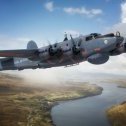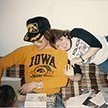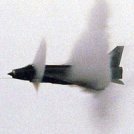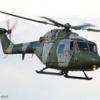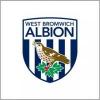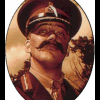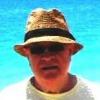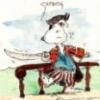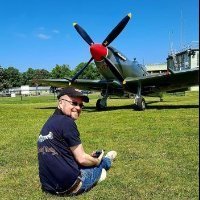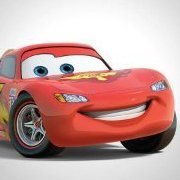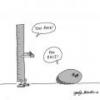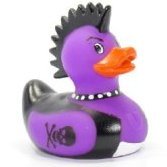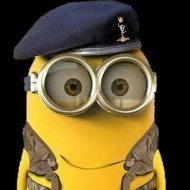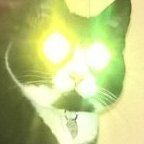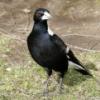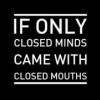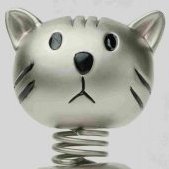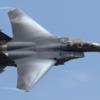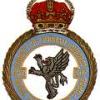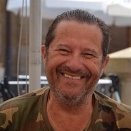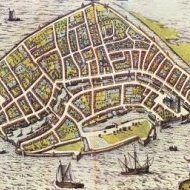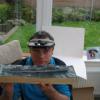Leaderboard
Popular Content
Showing content with the highest reputation on 22/03/23 in all areas
-
This kit quite literally fell together. I was very impressed with how easily it went together and how nice it looks when finished. My only problems in the construction were being old and fumble fingered. I kept dropping parts on the floor. I lost the ejection seat and replaced it with the seat from the Heller Sabre kit. Of course, as I was finishing the kit and gluing the gear doors on I dropped them on the floor repeatedly and while searching for them I managed to finally find my missing seat. It is brush painted with Hataka, Vallejo and Xtracrylic paints with the kit decals, which had way too many stencils for me. I'll really be in for it when I build my Airfix Phantoms and Buccaneers.25 points
-
Hi all I've not posted anything for a while as I've been sidetracked with work and a house move so not had much time at the bench, but thought I'd post my first completed model for almost 12 months! It's a rescued project from the shelf of doom, and something a little different for me....the old LS F-4E Phantom in 1/144 scale. Nothing special... just straight OOB apart from making it a later wraparound SEA scheme for the Osan aircraft using some spares box low viz stars and bars. I don't think they're exactly the correct type but its all I could find. I have seen this variation on some F-4s so I'm calling it artistic licence! 😁 Brush painted with Vallejo paints, but if i was building again I would go to the trouble of 'micro masking' and use the airbrush instead! 😁 It's a little bit too clean for my liking...but I'm calling it done so I can crack on with the next project 😁 Hope it's of interest and thanks for looking. IMG_20230321_195446 by Binbrook 87, on Flickr IMG_20230321_195510 by Binbrook 87, on Flickr IMG_20230321_195556 by Binbrook 87, on Flickr IMG_20230321_195532 by Binbrook 87, on Flickr IMG_20230321_195619 by Binbrook 87, on Flickr IMG_20230321_195638 by Binbrook 87, on Flickr20 points
-
Dear Fellow Modellers It's been a while since i've built anything. I've had this Airfix kit in the proverbial stash and along came a reason to build it! I've recently become involved with a charity and suggested I might present a history talk for them , online using Zoom. I do like visiting old WW2 airfields mostly in Suffolk, Norfolk, Essex and Herts. It seemed natural to present a talk giving an overview of these airfields and the part they played in the Air War against the Axis. I did the talk in Feb and to my absolute astonishment nearly 500people joined. The organisers were most pleased with the numbers and also with my presenting 'skills'. They liked it so much that they asked for a second talk. This would be a 'Part 2' and concentrate on the role played by Navigation Aids, The use of Electronic counter-measures and Special Duties /SOE squadrons. I knew of the RAF 100 Group activities and thought i would build this RAF 100 Group B17-MkIII as a teaching aid for this second talk. Background The flight crew who were involved in the Air Borne Cigar (ABC) missions were very brave. They were mostly 'yiddish' speakers, German Jews who had escaped the Nazis and due to their unique language skills volunteered for RAF service. They interrupted the German Ground controllers VHF based instructions. Due to the short range of the radio equipment carried there were many 100 Group aircraft incorporated in to the bomber streams on any given raid. 100 Group aircraft I have read experienced one of the highest 'group' casualty rates during missions partly for this reason. Consider that if they were shot down they had a 50% chance of escaping the stricken aircraft for a B17 or B24 (for a Lancaster this was said to be only 15%) .If they were captured they faced almost certain death at the hands of the Nazi state . In my humble opinion ,they deserve generous recognition. To escape their tormentors once and then willingly put themselves in to a position where, if captured by the enemy, they had no options, compared to their fellow RAF aircrew, is quite extraordinary. Anyway here's the finished model... I decided to pose it on a diorama with the Airfix USAAF 1:72nd refuelling set. It's a 'What If..' situation where the RAF B17 on returning from a mission over Germany in 1944 was forced to land away from it's home base at a USAAF Heavy bomber base due to fog. The ex RAF Trolley Acc, inherited by the USAAF, is ready for engine run ups. The Refuelling tanker is making it's gentle way in to position, awaiting the American Technical staff to come from their breakfasts and top off the tanks with some fuel to return to RAF Oulton in Norfolk. A passing B17 bomb load is off to another 'spectacle' loop for a USAAF B17 to be bombed-up for a target in the Pas De Calais.... I made the brick building 20 years ago from a kit it's 1:76 scale for a railway! The WW2 Pill box I scratch built about 30 years ago ( it's probably a bit over scale for 1:72 or 1:76!) I live on the WW2 London Outer Defence Ring ( an anti invasion set of defences to slow the Germans down ) and there are many pill boxes and defensive positions in the district. I recall going out to find one and measuring it to get the size roughly correct. The empanages are covered by steel doors in many of the original pill boxes. Hope you like it? Anyway i hope you enjoy the finished product! I certainly enjoyed making it and the kit was not bad at all. Paints are MIG RAF Brown. Tamiya RAF Green 2. The RAF black comes from a Hataka Red Line WW2 RAF set of paints. It could do a bit of tidying up in places i guess? It was varnished with some sort of floor protector liquid, which i've found to be quite a nice finish, not matt but not full gloss and quite thin . Suggestions and critique welcomed!19 points
-
18 points
-
Well, I'm calling this one finished as much because I've lost the will to do anything more with it than anything else. It's only my second 1/48 scale aircraft and the first Spitfire I've ever built and I'm going to say that it has turned out just about OK, I'd give it a C+. As I mentioned in my build thread, I had huge problems with silvering on the decals not all of which I was able to get rid of. Given the decal issues, I haven't bothered with a panel line wash. Any issues are down to me and not the kit which went together really well and I was really happy with the paint job until I started on the decals. Still I've learned a few things, the next one will be better... Big thanks to @Troy Smith in particular for his advice during the build. ] John17 points
-
It took more than three months to finally complete the desert-painted A-6E belonging to the VA-65 team. The aircraft was deployed on the nuclear-powered aircraft carrier USS Theodore Roosevelt and wore a special desert two-tone livery during Operation Desert Storm in the Gulf War. The concept of camouflage painting was proposed in the Red Flag military exercise in 1990. Different from ordinary light gray low-visibility painting, desert painting is considered to be easier to integrate into the desert environment and reduce the possibility of being locked by optical tracking. (Please correct me if I am wrong.) However, in the later tests, it was found that the camouflage paint would prevent the deck landing commander from accurately and clearly guiding the aircraft to land. In addition, most of the missions of the A-6E were night operations, so camouflage painting was not widely used. It is worth mentioning that this A-6E was hit by an anti-aircraft missile during a ground attack mission two days after the desert paint was removed. Fortunately, the missile did not explode but penetrated the entire right wing. Because the impact was near the edge of the wing, far from the folded hinge part of the wing, no serious damage was caused. The crew finally managed to ditch the plane to the base in Bahrain. This A-6E was later repaired and continued to serve. In terms of model making, the overall kit combination is not bad, only the front landing gear, the guard plate of the engine nozzle and the connecting part of the wing-body use some filling to fill the gap. In the initial production, a lot of time was spent remaking the panel lines in order to preserve the details as much as possible. Now it seems that I have indeed added a lot of unnecessary burdens to myself... It is excellent to only deepen the line without being obsessed with textual research. The ammunition part uses reskit's 3D printing pylon and resin mk82 ammunition. I have to say that the details of the 3D-printed parts are amazing, and I am looking forward to the printed landing gear of the GWH Su family as well as the Tamiya F-14. The ultra-high-detailed ammunition and pylons can be said to be one of the highlights of this work, so a lot of effort has been spent to highlight this part. Another highlight of this work and the most difficult part should be the camouflage painting. Since the decals are also two-color stitching, there are very high requirements on the size and border of the camouflage paint blocks. It is necessary to repeat many times to adjust the boundary during the spraying process. So this time I did not use pre-shading but tried to use post-highlight, salt erosion mask, and filter to de-aging. Although I tried my best to do the aging well, but due to insufficient technology, I still couldn't faithfully express the heaviness of the real machine. I can only make persistent efforts in the future. It has been almost 20 years since I first came into contact with model making. I was accidentally brought into this miniature world and was deeply attracted by it. The development of the model industry is also accompanied by the development of modern industry, and more and more fine products are brought to the market. More and more model authors are involved in product development. Products are becoming more and more refined, but the difficulty of making them has rarely increased. 3D printing technology is an even more dimension-reducing blow to model making, which was unimaginable 10 years ago. Before this year, I have never systematically examined my technical reserves and found that I still have a lot of techniques and techniques to learn. I hope that I can continue to bring more satisfactory work from this year onwards. Thanks for watching!16 points
-
Well… progress has slowed a little of late due to work, but I’ve made a tentative start on the very complex landing gear. This is a bit of an experiment, if I’m being totally honest, as I’ve knocked up some gear using spare sprue. I’ve no clue about working with metal or solder, so this may (literally) fall flat on its face, but we’ll see. I always keep large sprue trees as it’s so useful when it comes to scratch work. I’ve chosen some that’s a little thicker (by 0.25mm) than the HK Lancaster gear legs as my logic is if such diameter can support the heavier weight of that kit, it should be able to hold the much lighter vacform Stirling. So… some sprue and lots of small metal pins which will be used to reinforce each join: Following plans, I cut the main parts of the structure and these were then slowly put together. CA glue secured the metal pins in pre-drilled holes, and then when each ‘leg’ was complete TET was run into each join and allowed to dry for 24hrs to make a very strong join: Great care was taken to ensure each part of the gear was identical: The joins were then reinforced further with Milliput and sanded smooth: Next, the main cross members were added using more sprue and again strengthened with metal pins: And with the wheels added, they are starting to resemble the complex structure of the real thing: What I’m now going to do is temporarily fix the gear to the bays and leave it standing for a week. I’m off to Italy skiing so when I return, if the model is still standing securely on its gear I can call this a victory and crack on making and adding the rest of the detail - of which there is lots! If not, and I come back and it’s laying flat on its belly, it’ll be back to the drawing board and I may have to invest in a soldering kit and a whole lot of reading… Stay tuned! Tom16 points
-
Another early Viet Nam era Aeroscout helicopter. This is the LF Models 1/72 Hiller OH-23G Raven. The raven was primarily a training and observation helicopter but in Viet Nam it served, along with the OH-13, with the Aeroscouts before they were both replaced by the OH-6A Cayuse. This is a typical limited run product with all the foibles of the breed. Having said that it was a mostly pleasant 8 day build. 2 areas gave me the most trouble. First was joining the tail boom to the fuselage. Both pieces are hollow tubes that are butt joined. I first used liquid cement but they broke apart during handling. Then I tried Pacer Zap but they broke again. Next I tried 5 minute epoxy with the same results. Finally I inserted a .062" (1.6mm) evergreen rod into a .093 (2.4mm) tube and stuck the rod into the tail boom and the tube into the fuselage and that held. The other problem area was getting the engine, which was a separate assembly, and the engine mounts to all fit together when there was no indication of exactly where the engine should be placed. The bubble transparency came as 2 parts joined horizontally at a frame line. The 2 pieces and then the whole bubble fit surprising well together and then to the cabin. The kit decals were printed with an Alps type printer onto a continuous decal film so they required careful trimming. Because of that I used the stars & bars from a Fantasy Printshop sheet. Other then that they worked with with no silvering. All paints were AK Real color. I also have their OH-23B that I will be building later in the years as a trainer. Next up will be a Bell OH-58D with the latest upgrades. I was originally going to build this using the Matchbox/Revell OH-58D as the base kit and the Procal Decal update but that didn't get very far and this time I will be using the Italeri kit as the starting point. Enjoy15 points
-
Kit - Airfix Paint - All lacquers Decals - Xtradecal 72 291 Extras - None Enough has been written about this wee gem, so I'm not going to try to add anything other than this: If you need a 'mojo restoration project' , you could a h*ll of a lot worse than buy this one. Honestly I was a little sad when it was done. Wonderful wee kit, more like this please Airfix. Cheers from a cool but very sunny NZ. Ian.15 points
-
Hurricane Mk1 of Sqd Ldr Bader, 242 Sqdn Duxford 1940. From the Airfix 'Ready for Battle' gift set. Built per boxing with addition of seatbelts, & rear view mirror.12 points
-
I don't recall seeing too many of these on here before, I thought I'd do it before starting Airfix's Mk. IX to see how they compare as build experiences: Shame about the bottom cowling coming adrift on this one: And to finish, one with the Tamiya Mk. XIII and Revell's Mk. IX: Thanks for looking J.A.12 points
-
No fear Richie, finding the time is more the issue. We have a rather hectic schedule this year with protracted time away from MT. At this very moment I’m dictating this message to Darling while overlooking magnificent views of the Welsh countryside (Ceredigion, land of my fathers) from a 200 year old coach house, fighting a 50 mph headwind, lashing rain and driving sleet…yes, the British spring is well and truly here. Unfortunately, the Mem draws the line at dragging the man cave with us across Europe which, I feel is a tad unreasonable, especially as Baldrick has kindly offered us the use of his Series 1 Bailey Unicorn Valencia, once he’s refitted the damp asbestos insulation, removed his ‘medical paraphernalia’ and revolting collection of live nicknaks. Still, I’ll be back on this as soon as I return to the land of the Yellowbellies….12 points
-
Fresh off the bench is the Sword 1/72 F3H-2 Demon. This is my first completion for 2021, but I started it late 2020. This is a short-run kit, with resin seat and exhaust and some PE parts all included in the box. Installing the PE wing fences required hacking into the leading edge of both wings with a razor saw. The fit of the kit is a bit tight, with minimal locating tabs and just small nubs for the wings. The main landing gear is delicately butt welded with super glue, and I was surprised it has handled the weight of the model so far. The cockpit is built up first, with the fuselage halves then joined around this section. I did not align the cockpit very well in this process, which required some forceful manhandling to straighten it up, which left some significant gaps between the fuselage halves. This was treated with melted sprue and sanded back to remove (most) seamlines. The decals were excellent, and conformed well with the panel lines. I was going to do add an external tank and weapons load, but lost focus and just wanted to get it finished. Overall, despite being a slow and sometimes frustrating build, I quite enjoyed the process and am happy with the end results. Thanks for viewing, feedback/criticism always appreciated!11 points
-
Just finished this in the bomber Command GB after what seems like an eternity! L7463 started out with 97 Sqn based at Coningsby on 26th September 1941 in the markings of OF-P. It moved to 106 Sqn on 20th January '42 and changed its markings to ZN-S where it operated until it's fateful end on the morning of 24th April of that year. Taking off from Coningsby at 22.00 on the 23rd, it attacked the Heinkel works in Rostock. On the return, the port engine caught fire which was not uncommon for the Vulture, the Achilles heel of the Manchester. Losing altitude on one engine and slowly turning due to the asymmetrical power of a starboard engine trying to compensate, the pilot Harry Murdoch Stoffer ordered the crew to bail out to which all successfully did. Stoffer stayed with the aircraft, but unfortunately the fire burned through the port wing causing it to break away. Sadly he died in the subsequent crash in Visgaarde near Tinglev in Denmark: The build represents the aircraft as it was with 97Sqn when it started it's short career: The build uses the Revell fuselage mated to the Planet wings. The mid upper was from the Planet kit, the front from the Falcon set and the rear scratch built using the Falcon Sunderland rear turret part. All in all a fun build. Just hope we can get a 1/48 conversion set in the future with out re-mortgaging the house for a Paragon set! Hope you like it The build is here Thanks for looking Neil10 points
-
From a rescued Manx, fitting rear Trax and scratchbuilt front ski's! My first try with TRAX!10 points
-
A small portion of HMS Invincible's deck The small portion of deck is made from a piece of laminated chipboard shelf. Nick Greenall (IPMS Harrier SIG) kindly sent me a plan of Invincible's deck and 'runway' at 400 yards near the rear lift. I printed it at 1/72 and used it as a guide for the deck markings and circular tie-down points (Pic 1). I drilled 2mm holes (46 of them!) with a pillar drill so I could achieve an accurate and consistent hole location and depth. Then scribed the line of the lift edge using a thick piece of plasticard with a suitably rounded corner as a guide, enlarging the groove until it looked like the gap in photos. The deck was painted with Halfords black and grey primer rattle cans, mixing grey and black and using Colourcoats 'Deck Grey' as the guide for the 'deck grey', The deck was then masked for painting the white guide lines (Pic 2). Tie-down rings are wire from kitchen tie-twists. The wire was a bit too shiny so it was heated to red hot on the stove and when cool it took on a nice dark steel colour. The wire was twisted round a 1.2mm drill bit and individual rings cut from the spiral (Pic 3). The rings and ring holders (10 thou plasticard) were glued in the deck holes with PVA. The white 400 yard marking was painted using a stencil mask made from Nick's plan. Pic 4. A rather too clean deck; Tie-down chains I bought modelling chain which was supposed to be 40 links/inch, which would have been about right at 1/72, but when measured they turned out to be 32 links/inch 🙄. Hey-ho, best I could get. The clamps that attach the chains to the undercarriage legs are pretty complex (in real life). I made the 1/72 representations out of stretched sprue and thin strips of Tamiya tape wound around to simulate the adjusting rings, sealed with thin super-glue then painted. The chains were sprayed with Alclad steel, but it didn't stick to the brass and I had to resort to Humbrol aluminium (the old good stuff, No.11) and matt black mixed; Attaching the chains to the deck revealed the problem with oversized chain, it didn't want to go through the rings at all, nor hang convincingly. A frustrating evening spent faffing around, unintentionally removing rings from the deck and much paint from the chains, more repairs... and then it was done. One Sea Harrier FRS.1 on a (slightly grubbier) deck; Mostly happy with the result. Better get the rest of the crew and bits n' bobs on deck, and get them ready for a CAP. Thanks for looking in.10 points
-
Finally finished, at least as far as it goes. It's been a difficult buildfor me, for several reasons. First, basically, I'm getting too old (74) for dealing with miniscule PE. For whatever reason, my fingerprints have sort of faded, and the feeling in my finger tips ain't what it was. I also have a feeling that the dose of covd I had in October has affected my concentration, whatever. I'm glad it's done. It has a case because I'm out of space, so it will have to live on an open shelf in my corner of the garage Anyway, Thanks for looking! Fraser9 points
-
Hot on the heels of the Lotus comes a Jaguar XJR5-2 this time from Provence Moulage, a maker once at the forefront of 1/43 kit production and based in France. The XJR5 was the brainchild of Lee Dykstra at the behest of Bob Tullius, a US Jaguar dealer and met with some success on the US race circuits. So much so that Tullius sought to reintroduce the Jaguar factory back to Le Mans and the circuits they'd ignored since the success of the D Type back in the fifties. Jaguar saw the potential and involved Tom Walkinshaw, but he thought that the XJR5 didn't have enough development left and proposed a much more radical solution which culminated in the XJR6. Meanwhile, Tullius and Dykstra were quietly left by the wayside and eventually dropped from the race effort. A poor reward for their enthusiasm but TWR would be vindicated in the end, the XJR9 winning at Le Mans and marking Jaguar's successful return to racing. I've always liked the XJR5, together with its distinctive colour scheme and the Provence kit is a good one. In keeping with my preference for something a bit different, I chose the Miami car which had unique wheels, most XJR5s having gold BBS wheels. The wheels from a Honda GP car (I think) were used and proved to look just right. Also, the car had a baffle fitted to one of the vents on the left of the body and a different headlight arrangement to the kit. I also added as much detail as I could to the front spoiler just to make it more individual. PM had the habit of issuing generic cars and just varying the race numbers. Overall, a nice little model with enough scope to add detail and personalise as far as resources allow. Dave8 points
-
Dejavu all over again........ I've already built this aircraft in 1/72 scale, but thanks to a member on the Suffolk Spitfire facebook page, Jamie Bell, who has created his own decals for the aircraft in 1/24 scale to suit the new Airfix kit, and also in 1/48 scale, I've now built it in the larger scale too. It's my favourite example of my favourite aircraft after all! I used the Eduard Weekend Edition MkIXe kit to replicate how RW382 is today, but the Eduard MkIXc kit would be more accurate to how the real Porky II was in-period. Brush painted with AK Interactive 3rd Gen paints, with Jamie's decals. If anyone wants a set in either 1/24 or 1/48 scale, let me know and I'll get you in touch with him. I've tried my best to be as accurate as possible with the camoflage layout and decal positioning.8 points
-
The project is still very much on. In fact only last week I took delivery of the Baldrick and Melchett figures I commissioned for this build. The delay on my part is down to the fact that my Zeppelin display has to be ready for its debut at the local model show on 15th April and everything else has to take a back seat until then as there is a lot of work still to be done. Getting back to this will be a real breath of fresh air! Martian 👽8 points
-
A build I thoroughly enjoyed. Everything that is reported regarding the fit of this kit is accurate but I was trying to stretch myself. WIP Here. Primed with Tamiya Neutral Grey. Painted with Colourcoats Dark Admiralty Grey, Barley Grey, Light Admiralty Grey, Medium Sea Grey, Light Aircraft Grey. Tamiya Nato Black, Rubber Black, Flat Yellow, Linoleum Red Brown, Flat White, Buff, Clear Red, Clear Green, Flat Aluminium. Oil paints used for a filter, Windsor & Newton White, Paynes Grey, Blue. Washed with Citadel Seraphim Sepia, Nulnu Oil and a blue grey oil wash thinned with lighter fluid. Finished with Windsor & Newton Galeria Satin Varnish mixed with a couple of drops of Tamiya Neutral Grey. Aftermarket used. PE from Flightpath and Eduard. Pavla Intakes and Nozzles designed for the Airfix kit. The Ejection Seat was a mix of the kit parts and resin bits from a Czech Master Resin Seat. Pitot from Master. On with some Pics. Thanks for looking, Cheers, Alistair7 points
-
Hello folks! As I said, I'm a newbie and this is my second ever kit. The first one was a Sukhoi SU-27 "Flanker" from Revell. I'd like to share my building process to get some advice. First off, I choosed this kit just because it is a starter kit with some paint and accessories and because I think the "Gulf" colors are a cult in racing cars, some of the greatest livery ever made. So let me introduce to you the Aston Martin DBR9 that I aspire to replicate. And here are the components of the kit, for a 1/32 I think it's a well detailed model. First step: I filed down some mold mistake After I discoverd that some colors are dried out (fortunately not the "Gulf Light Blue"). Aaaand...I thought I could use the Tamiya black color I already had, to replace the one in the kit, but while painting the car floor I discoverd that my Tamiya is a gloss black not mat black, so now I have to cover the disaster and gain some knowledge in paints codes. Any advice, thoughts? I have to buy new colors and I think I'll go with Vallejo or Italeri Acrilic paints.7 points
-
Kit - Airfix Paint - Lacquers & Tamiya acrylics. Decals - Xtradecal 48 220 Extras - None. I've built it, I didn't enjoy it, at all ! There's an unintentional coincidence between Vampires being the subject of horror films and trying to get this kit to 'work'. Soft, poorly defined details, poor fit & engineering around the nose, simply an 'opportunity missed' in my opinion. Reminds me far too much of the old Hobbycraft kit from way back in the day - I actually gave-up on that one. What I find hard to get into my head is the lack of continuity across recent Airfix new releases; the wee JP, that I've also posted, the Blenheim, Dornier 17, B-25, 1:48 Hawk 81A and Mustang were all superb... the 1:48 Meteor, 1:72 Gnat and this... not even on the same page. Such a disappointment, honestly I couldn't wait to get it off the bench. Please feel free to make any comments at all. Cheers. Ian.7 points
-
Here is my recently completed HMS Sheffield using the 1/700 Dragon/ Cyber-hobby kit. Built mainly OOB with a couple of corrections and was an experience to use 1/700 PE that was included in the kit. Paints were from Colourcoats, kit decals and was depicted in her final scheme before her demise during the Falklands Conflict. Build log here: Stuart7 points
-
Oh how splendid the lunacy is to continue. At least ye olde constraints on a gentleman's/Martian's time keeps one somewhat out of mischief what, what. Richie7 points
-
Hi all A few more images. I made the bold decision (or mistake) to fit the landing gear. I managed to fettle one side to allow it to slide in and then out again, but when I did the same to the remaining leg, it wouldn't come out... so rather than risk bending or breaking it, I left them in place. Time will tell if that was a good move or not! Pretty much everything is attached now bar finer details like pitot tube, aerial, etc - rudder is not glued for ease of painting/masking. Radiator is not glued either as I need to paint the grill then mask it, followed by the interior painted white. Cockpit glazing is masked ready for interior green - I usually follow this up with black or dark grey to get a continuance of the colour from glazing to solid plastic - less likely for the canopy frame to be opaque. Then an under coat - I usually use Alclad Filler/Primer Grey as it sprays out of the bottle, hardens nicely and polishes up prior to colour coats. Also managed to mask the light on the upper spine despite my reservations... And test fitting the prop (still have to paint the yellow tips - usually I mask, spray flat white, followed by yellow (my preference is Gunze H413 - which is a German RLM colour...) In terms of scheme, I haven't actually decided yet. I'm not overly keen on KL-B as I've started a 1/48 Eduard kit with that scheme. I'm leaning towards Douglas Baders early mount, ZD-D - I can use 90% of the markings in the kit (and the decals are a joy to use so why not), just have to source ZD-D and serial code P9443 (image courtesy of Eduard - The Spitfire Story): Cheers Rob7 points
-
Ok, so there was a little bit more to do than just the tracks. I’ve added the power cable to the turret light now, correcting it to enter via the bottom after looking at the routing: I’ve also added some rod to give the impression of the bolts around the pistol ports. The ports themselves will need a bit of filler before paint, as there’s quite a gap: Lights and guards have been added to the front glacis plate, along with some cables for the fender lights: All the roadwheels are now distressed, so I can get her up on her wheels ready for the tracks: Assembly wise, it really is just the tracks now, which I’m hoping to not stick to the road wheels during assembly so I can remove them for painting. After that, a last check over for any gaps that need filling, then time for primer. James7 points
-
Hi Stix. I'm fine thanks, and I hope that you are too. Thanks for your comments. They're appreciated. Left hand base plate now received the same treatment as the right hand. I'm glad that I tackled it now instead of leaving it as was. So before moving away from this part of the build, there was something else that I wanted to install. These Shermans were fitted with a mesh screen around the exhausts, and the way that I tackled that is as follows. First, the mesh needed support, so I drilled a couple of holes into the rear hull plate and super glued two pieces of U shaped brass channel into them. When that had hardened, I cut a piece of Accurate Armour diamond mesh to the shape and size required, and super glued it to the U shaped channels. So before moving away from this part of the build, there was something else that I wanted to install. These Shermans were fitted with a mesh screen around the exhausts, and the way that I tackled that is as follows. First, the mesh needed support, so I drilled a couple of holes into the rear hull plate and super glued two pieces of U shaped brass channel into them. When that had hardened, I cut a piece of Accurate Armour diamond mesh to the shape and size required, and super glued it to the U shaped channels. Once I was happy with the result, I glued the upper and lower halves together and clamped them to dry overnight. I decided to use the track guard extensions from the Dragon M51 kit, as they work out to be just about the right length. The holes, which are to attach the track guard supports, were all in the wrong places, so they were filled in with putty. When this had hardened and been rubbed smooth, I lined them up alongside a straight edge and glued them together. The join lines were filled and a new one scribed on. These guards are very weak and just to give a small amount of strength, I glued strips of 5thou card along the underside. This will be covered when the weathering goes on. Before I attempted to glue the track guard extensions in place, there was one other small job that needed doing. I removed the two triangular fillets between the front of the hull and the track guard, and replaced them with two cut from thinner card. The extensions were then glued in place. That simplistic little sentence belies the actual work that went into that procedure. I needed to have a straight, horizontal surface to clamp the extensions in place, so to do this, I clamped a 6inch steel rule against the underside of the hull (where the sponsons are). Then I was able to position the extensions, hold them with a couple more clamps and apply the MEK. I had to do them one at a time and leave them to harden overnight. So this was a two day job. The photo may give a better idea of how this set up worked. Once they had hardened, the two front parts of the track guards were added, after the leading edges were thinned right down. These also came from the Dragon M51. Edit; I just remembered that I removed the brackets for the 76mm main gun travel lock from the glacis plate, and the retextured the surface with MEK and a stippling brush. On the rear of the upper hull there are holes and a raised pin for the sledge hammer and track tensioner to be fitted, but they didn't go in that position on these tanks as the new main gun travel lock was located here. So these were cut off and filled in with some putty. I also added the locking pins for the filler caps from stretched sprue. It's a bit of a convoluted build, I know, but it's starting to shape up now. Thanks for looking. John.7 points
-
I would like to say the mudguards were fun but they have been a pain to get in the right place and keep them there and still movable. I've got my method to make the hinges but my gluing technique has been poor and got a bit messy on occasion. Run out of time to get the paint on so that's my next job. I used Bronco's decals in the end as they were very good. Nicer colour and very thin but not fragile. Some of the best kit supplied ones I have used.7 points
-
Despite not really overflowing with mojo this evening I made myself go out and fire some paint around. so far, so good, I reckon. The colours are very contrasting, so may need a bit of calming down, but overall I'm pleased. There are a couple of bits of touching up required (fnarr?) but I'll address them when I come to do the mottling. So far, so good - and I'm glad I went to the trouble of giving my airbrush a good clean beforehand. The photos aren't great but I'm under fluorescent lights using a crappy old iPhone camera; the colours are better than they look. In fact, they're almost too good - I think there's some toning down in the nearish future. Cheers, JRK7 points
-
Do it! It will be a pleasant diversion between Zeppelins. And you need a diversion - all dirigibles make Martian a naughty boy. Hope so! In the meantime, pick a seam - any seam: I have to admit, she's got a nice shape. 👙 I should build a 262 concurrently, but I don't think I have one. Wait - I have the old Revell 262B Night Fighter version. I have no clue if that is any good. I seem to recall you have to cut out the wheel wells so you can see the underside of the cockpit, or some such thing. It's been in the loft for a decade or more. Cheers, Bill7 points
-
[First of all I'm afraid this one is a little picture heavy - 23 pics - so if you have a slow internet or don't like lots of photos of averagely built models you may want to skip this one! But I did enjoy a bit of a photoshoot with it last night, even if it did take the best part of two hours to get done.] It's taken a while to get here, nearly 6 months, but I've finally got this one finished. I've yet to see a badly built version of Tamiya's 300SL, and having built this I can see why - it's a very detailed kit with few flaws, even though some of the tolerances are a bit tight. But there's nothing in there that's wrong, so very little I can blame Tamiya for the issues as opposed to myself. If you're in the market for a 1/24 Gullwing you can't go far wrong with this one. Unlike some of the superbly built versions I've seen on here mine is very close to being as you get it from the box, the only additions being embossing powder to represent the carpet and Bare Metal Foil where there wasn't kit chrome (e.g. window surrounds, door handles etc.). The only bit about the kit which was annoying were the bumpers which had a prominent mould line at the ends, especially annoying for a chome part so I ended up sanding that down then covering the bumpers in Bare Metal Foil. Anyway, enough about the build, if you want to see the whole thing it's here: So onto the photos. First of all, a snap of what you're missing when the model is complete - Tamiya have you build the entire spaceframe chassis which looks complicated but actually assembles very nicely. It's all hidden though unless you leave the undertray clear (I didn't) so let's move onto a trip around the car: And back to the beginning with a more stylistic shot Of course, the most striking feature of the real car is the Gullwing doors, and the kit accommodates this by allowing you to pose them in the open of closed positions. You've seen them closed, now for the open pose: Unfortunately, in the latter parts of assembly some of the embossing powder came lose and static clung to the rear window. It's barely noticeable until the camera decides to cruelly highlight it Of course, one of the benefits of having opening gullwing doors (and bonnet) is that you can get a half-decent shot of the interior. Can't get any closer - the camera was tucked under the doors for these shots. There's also quite a nice engine under the bonnet. This is what you end up with out of the box, other people have made a more complete job by adding additional wiring etc, but that's just not for me. And finally, onto the arty shots. First of all I decided to try my hand at a 'real-world' style shot. I wasn't going to bother putting this one up as I think it's fair to say I need to work on getting the backgrounds right, not to mention it was late and I didn't check that the camera had focussed on the front of the car rather than the windscreen so it's actually a bit of a rubbish shot. But we all have to start somewhere and hopefully it gives the idea of what I was aiming for. (in fact, the more I look at this, the worse it becomes So onto some better shots. First up the 'angles' And to round things off the 'reflections' I think this one is my favourite. Thanks to everyone who has waded through all of these, and apologies to all who lost the will to live, but I did enjoy both building and photographing this one so I hope and least some of you enjoy the pics too. And especial thanks to all who liked, commented and encouraged through the build.6 points
-
One thing that always surprises me about FW190s is the sheer range of variants, roles and camouflage schemes. I always think of the 190 as a fighter, but it was also widey employed as a dedicated ground attack aircraft eventually replacing the Ju 87 in that role. I have never built an F or G variant. The 190 and its derivative, the Ta152, stayed in production until the very end of the war. Goodness knows how the Focke Wulf engineers managed to do that. There were very many problems with resource supply and production. It's clear that towards the end there were many compromises made. This build will represent one of them. The factory at Mimetall possibly had problems with paint supply. Their FW 190D-9 aircraft were produced in overall RLM 76 light grey with a disruptive pattern of RLM 81 brown. At this point in the war, Luftwaffe camouflage was intended to prevent observation while on the ground which explains the re-introduction of greens and brown. It is hard to see how such a high contrast pattern would have had any camouflage benefits but, as I've said before, needs must when the devil vomits into your kettle. . Mimetall also had production problems with the 190D tail unit, so they ended up fitting Ta152 tail units to at least three aircraft - probably more. Eduard released a 1/48 kit to represent these very late war aircraft. Two of their Ta152 schemes are well documented. The third is only documeted by written records, not photographs, so this is slightly more speculative. However, it is this one that I will build. The aircraft was assigned to 9./KG(J) 27, which was a bomber unit with the pilots retrained to fly fighter aircraft. These KG(J) units had distinctive RV markings with the colours in checks rather than stripes. It is possible that the unit carried these markings on their Doras - their A-9 aircraft certainly did. So that's how I will represent the model. I know I'm starting this late with only four weeks to go so let's hope I can focus with all my other builds in progress.6 points
-
Hi, About time that I start a thread for my RB-36H. I'm using the Hobbycraft B-36D because it has the neccesary blisters for a recce B-36. As far as I know Roden have not done a recce version of their B-36 yet. I will use option 1 from the Caracal sheet: RB-36H 51-5754 of the 72 nd BW at Ramey AFB. There is also a second option for an RB-36E of the 72 nd BW, but that's a bit more bland without the SAC and wing badge that my RB-36H will have. Today, I glued the wing together and airbrushed the props black. Cheers, Stefan.6 points
-
Prior to this I'd done an AW101, Hawk T2 and F16 so it was a little on the ambitious side. I don't think I quite realised it at the time but was sold by the picture on the box! It's taken 4-5 years to get finished (on and off, mainly off) and the more eagle eyed might notice the odd missing piece, however for the most part it's complete. I had some trouble with some of the decals appearing to be oversized or just too small for me to get on right, so there's a few of those missing too. It's all brush painted and whilst that's not something I've been great at in the past, this has been very useful for me as I've got quite a lot of practice in, so hopefully that's going to help me out in the future. The body doesn't quite fit correctly at the front, although it was several years ago that I did that part so I can't recall what went wrong.6 points
-
Howdy, I managed to get a good bit of time last night and got a fair chunk of construction done. Reached a point where I need to start painting what I've got before putting it together and moving on to the next batch of bits. Continuing the theme of a picture per step, rear wheel suspension... Followed by drive-train bits and front springs (not in the photo), they'll be visible later... Followed by shock absorbers etc for the middle wheel (which I'll be depicting in the lowered position since it needs to be one or the other)... Front axle, more drive-train and more suspension for the lowered middle wheels... A lot of these steps hardly look like I've done anything, just a gradual build up of stuff really, wheel hubs (middle) and some general linkages etc here... Finally, something obvious. The lower engine sections (looks like the top half isn't visible and not modeled either - who wants to waste time on something that won't be seen, I don't mind this)... Fuel tanks and mud guards.... Wheels, lots of wheels (minus tyres, definitely adding those after painting)... Winching station, with the cables already masked up ready for painting. The most interesting bit I've built so far.... And the oil reservoir and a tank of some type, that's all for last night, going to try and get a coat of paint on tonight so I can paint, weather and assemble all these bits before moving on to the cab and other bits and bobs to go on top of the chassis. Thanks for stopping by, I guarantee there won't be as many pictures in future posts for a while6 points
-
All the F.B.VI Mosquitos received by the RAAF were built in England. As such, they were camouflaged in RAF colours and received RAF warning markings and stencils. Photos of camouflaged F.B.VI aircraft in Australia show stencil markings on the starboard fin so I would assume that they also carried the standard RAF "keep off" markings over the radiators. I do not have any photos of camouflaged RAAF A/C taken from above that confirm this but, I believe it to be so. The matt camouflage paint absorbed heat in the Aussie sun and this caused glue problems and structural damage, so the RAAF over-painted all their aircraft in aluminium dope. In the process they over-painted all stencilling and warning markings and, generally, did not bother to replace them. No camouflaged F.B.VI saw operations. Two, A52-505, NA-Q, and A52-526, NA-E, were used to escort Spitfires flying from Morotai to the Philippines in March 1945. They were the only camouflaged F.B.VI that left Australian shores. Was that gentle enough?? Peter M6 points
-
Good evening, THANKS! Gravity Colors primer & paint were used I didn't like that much to have the white circles clear coated: too shiny for them. It was fun to do though... … and to undo! Once again pink undercoat over the sanded areas. Then Rosso Corsa. Do and undo…🙄 Although used to Gravity products since their creation, I am always amazed by the grip and the solidity of the paint and the primer, not to mention how so thin they are: a joy! The clear coat should be on soon. Pascal6 points
-
Hello everyone, a quick update on my Panzer IV, since the last update I started to work on the various tools that are housed on the top of the two fenders. Quite a few had multiple parts so took a little time to complete, no real problems just a little bit fiddly. On the following photo's non of the tools are glued in place, I have used masking fluid to attach for easy removal later on for painting. The first photo shows the jack, axe and some other tools with PE clamp handles, on the glacis plate are PE mounts for the spare tracks, I also added the machine gun... On the other side, quite a few assemblies here with added PE, spanners, bolt cutters, extinguishers are some of the items here along with spare wheels in an enclosure... At the rear there are cleaning rods, spare track, crow bar and a rear light panel... On the other side is a spade and a long bar ( I assume it's some kind of spanner) with good detail showing serrations on the head.... I then assembled the wheels and also the sprocket and idler wheels... So next up is to start assembling the suspension, then adding the wheels and start on assembling the tracks... I'll be back when I have more to show, all the best and thanks for looking in... Ed6 points
-
Was trying hard to not be tempted by this group build but this post shows that I failed. I'm going to pitch in with this one and hope that something nice comes out. I won't be doing anything about the kits inaccuracies, just trying to have fun with it. The kit: And a few extras: The markings will come from one of the options on this sheet: Got a few in the build pile to get off the desk first but will be back with progress as soon as I can. Pete5 points
-
So, the plan had been to start in plenty of time using the Falcon Swift FR5. Then Mrs. Mackem decides we will decorate not one but two bedrooms at once upgrading all bell and whistles. A late start has forced me to temper my aims and I will now be doing this: The kit looks fairly straight forward so I should be able to make up for lost time. I made a start at the weekend with a lot of painting small components: I've even managed to glue some of the smaller items together to make slightly bigger items: All being well I should be able to get some more progress in this week. I also need to think about colour schemes too. There is one I have in mind but that's for later on. Glad I've managed to make a start with something sensible. I think I would have enjoyed the Swift but it may have been a step too far. As always thanks for dropping by.5 points
-
It has often been written that the Luftwaffe was absent from the Normandy's skies. Nothing could be so wrong. The excellent book by JB Frappé, althought in French, proves that against overwhelming forces the German airmen fought well and died so. The picture on the cover of that book , and some pics in it, were the inspirations for my model and I have tried my best to duplicate a Bf 109 G6 from the II/JG3 taking of from a base around Evreux to go on a bombing mission on the landing beaches. As there are no markings for that particular plane I had to do with my own masks and the white filet around the chevron , bar and number one were nightmares to do right. I took advantage of a light end of winter sun to take the pics. And so it goes, best regards. DFC93BBE-3A7A-40EB-8DC1-1773A9BDB7E2_1_201_a by jean Barby, sur Flickr 4BFD44DD-B1C5-4B8B-8F54-52B7CFD0A9A7_1_201_a by jean Barby, sur Flickr DDD7CC0D-6A73-4455-9E0E-6620908244BF_1_201_a by jean Barby, sur Flickr 269BFCD1-EB3A-4081-A0A9-F22CCDA93623_1_201_a by jean Barby, sur Flickr C71D41FC-FD79-41D8-9303-8CE79DB1CA46_1_201_a by jean Barby, sur Flickr 0875AC02-5712-4EE6-89CB-69D4EAD6EC8F_1_201_a by jean Barby, sur Flickr5 points
-
Here is my Tamiya M51 built as a tank from the Six Day War (June 1967). Ariel Sharon, who would go on to become PM of Israel from 2001 to 2006, commanded an armored division from the turret of this tank, during the Battle of Abu Ageila in the Sainai. The Tamiya kit is very good, but has a few shortcomings. My main issue swith recent Tamiya Shermans are the seam line along the edge of the rubber track, the grab handles molded as tabs of plastic, and the the manufacturer's insistence that a sherman could be driven on instruments. They give you commander figures yelling orders into a radio, but then all vision periscopes, including the driver's, are closed. Modeling an open periscope requires only minor surgery, so I did that. But if you want open hatches with periscopes in them, you'll need to hit up your spares or the aftermarket. I also added some resin boxes from Value Gear, to the rear rack. The securing cable is this very fine rubber tubing I got lord knows when where or how. I had this tank sitting in the almost finished pile for well over a year. I didn't really know how I wanted to weather it. After painting (Tamiya mixed colors), I applied some dark brown and dark greenish brown washes in something of a hybrid between a pinwash and a general wash. Perhaps a very sloppy pin wash. As the washes began to dry, I moved them around, dragging, streaking, and redepositing with brushed dipped in mineral spirits. This was followed with a very subtle drybrushing with Vallejo buff and deck tan. I then applied a slurry of light earthen colored pigments suspended in a solution of water and white glue, to the undercarriage, and once dry, scrubbed most of it off with an old toothbrush. A few scratches were added with taps and quick swishes of a piece of stretched sprue dipped in thin black/brown paint. That's it. Not my best armor model, but pretty good, considering I went from paint to finished in three nights. I was going to just paint the tyres as a break from my Hayate build. But then I just built up momentum, and here we are! The tarp is tissue painted with Vallejo thinned in water mixed with white glue. Same with the camouflage netting, but that began as medical gauze I probably could have scraped off a bit more of my pigment paste closeup of one of my simple periscopes. Just a wedge of plastic covered by a little flat square to represent the lid. A tiny bit of stretched sprue in back, simulates the hinge. Not thrilled with my mantlet canvas cover painting. I'm still working on fabric effects5 points
-
5 points
-
Yes, I first saw them in the Chambers Street Students Union in Edinburgh in April 1982 A mate of mine dragged me along as he told me I'd like them as they were like Gabriel era Genesis. They were practically unknown at that point and then "Market Square Heroes" was released in October and the rest as they say...... Cheers, Alistair5 points
-
Oh and by the way, you will probably notice that the GB area on this forum is like Hotel California...5 points
-
@Enzo the Magnificent your catchphrase is needed urgently here... Altogether now !5 points
-
Got a bit more done. The extra fuel drum on the front fender was a challenge. But in the end i got it all together and i'm happy with the look. It is starting to look like a tank. Appart from the fenders and the roadweel sections everything is dryfitted in place. The overall fit is good, there are no gaps. Next tasks: the turret and the tracks. I want to get all the sub assemblies done before i start painting parts.5 points
-
Stuart parts are only dry fit at this stage so should joint up OK I hope. More paint on just the boot top line to do before the deck decals and more small bits. Stay Safe beefy5 points
-
As always I made a small base for the jet. I used a piece from an old table, some cardboard from the kits box, paper towels, sawdust and Tamiya colors. Thanks for watching, commenting and your support. Cheers Daniel5 points
This leaderboard is set to London/GMT+01:00


